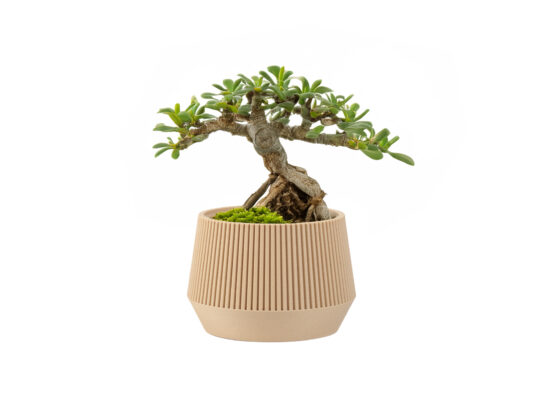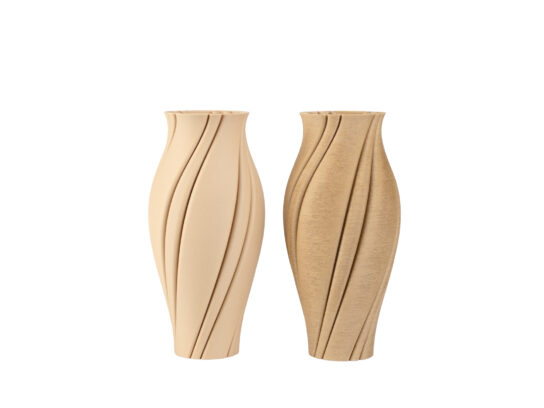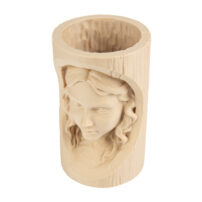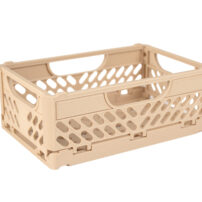
Prusament Woodfill
Prusament Woodfill is our own in-house made filament with ±0.04mm manufacturing tolerance. The material is filled with wood for great looks, while it maintains very easy printability.
Characteristics
Pros
- Easy printability
- Very nice subtle color
- Pleasant odor
- Can be stained like regular wood
- Lightweight
- Wooden particles from a sustainable source
Cons
- Brittle
- Poor high-temperature resistance
- Strong adhesion to the smooth PEI surface (separation layer needed)
Application
Flowerpots, vases, etc.
Prusament Woodfill is perfectly suitable for various home decor applications.
Stained wood-like models
Due to the high wood content, the material is suitable for staining, the same as with unprocessed wood.
Details
- Printing difficulty
- Easy
- Temperature resistance
- 60 °C
- Toughness
- Average
- Susceptibility to warping
- None
- Odor
- Pleasant
- Scent of wood
- Post processing
- Easy
- Possibility of staining like wood
- Solubility
- Difficult
- In dangerous chemicals
- Elasticity
- None
- Print speed
- Fast
- Abrasivity
- None
Prusament Woodfill is both visually attractive and easy to print. It really resembles wood in multiple aspects: it looks like wood, smells like wood, feels like wood, and may slightly sound like wood when knocked on. It can even be stained like regular wood to highlight the texture. The other great advantage of Prusament Woodfill is its easy printability. Most filaments filled with wood powder (or other similar additive) need a 0.6 mm, or even bigger nozzle for best results. However, the Prusament Woodfill can be easily printed with a standard brass 0.4 mm nozzle. Also, it doesn’t have to be dried before printing.
Similarly to our rPLA filaments using various waste products, the wood used in this filament comes from the wood manufacturing process waste. Last but not least, linden is the Czech national tree, and – as you surely all know – Prusa Research is a Czech company. Using the color of this wood is one of the many ways we show the world where we come from.
Download Safety Data Sheet (PDF)
Printer requirements
| Bed | Temperature: 60 ± 10 °C Enclosure not required |
|---|---|
| Print Surface | Satin sheet Smooth PEI sheet with separation layer |
| Extruder | Temperature: 195 ± 10 °C No special hot-end required |
Beginners tips & tricks
Print surface preparation
We recommend using the satin sheet, but a smooth sheet with a separation layer (glue stick) is also usable. Printing on a textured sheet is not recommended, as the adhesion might be too low.
To achieve the best adhesion of the print surface, it is important to keep it clean. Cleaning the surface is simple: the best option is Isopropyl alcohol (available in drugstores) which works best not just for Woodfill, but other materials as well.
Pour a small amount of IPA on an unscented paper towel and wipe the print surface. The bed should be cleaned when it’s cold for the best results but it can also be cleaned when already preheated for Woodfill, just be careful not to touch the bed surface or the nozzle. But keep in mind that when cleaning at higher temperatures, the alcohol will evaporate before it can clean anything. Alternatively, you can clean the bed with warm water and a few drops of dish soap on a paper towel. Denatured alcohol is also another option.
Sanding
When post-processing Woodfill, it’s better to use wet sanding. Without water you’ll quickly start heating the plastic by friction, it will melt locally and make it hard to keep sanding.
Staining
Due to the high wood content, the material is suitable not only for regular types of postprocessing, such as sanding and painting, but also for staining, the same as with unprocessed wood. This allows you to make a nice, vintage look, even more indistinguishable from real wood.














